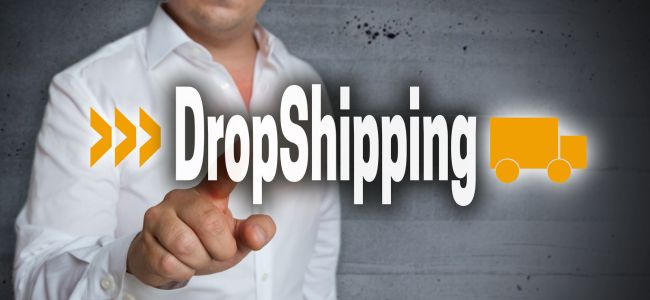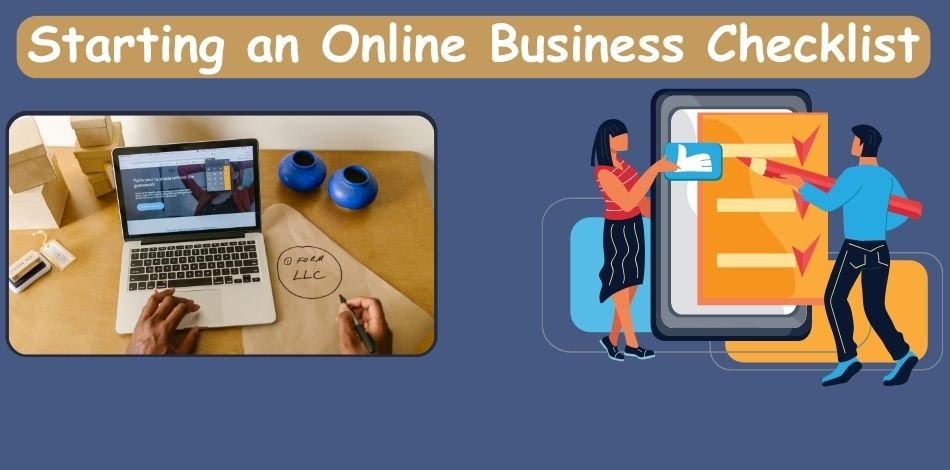Last Updated on October 30, 2025
When it comes to launching an online store without upfront costs, dropshipping is the go-to model for many beginners. It’s flexible, low-risk, and highly scalable, making it a top choice for those learning how to make money on Shopify without large capital. With dropshipping, you don’t need to buy inventory. Instead, your supplier handles storage, packaging, and shipping directly to your customers after each sale.
What is Dropshipping?
Dropshipping is a retail fulfillment method where you, the store owner, never physically touch the products. Once a customer places an order on your Shopify store, the product is purchased from a third-party supplier and shipped directly to them. This setup minimizes upfront investment and operational hassle.
Step-by-Step Guide to Starting Dropshipping on Shopify
1. Niche Selection
Choosing the right niche is the foundation of a successful dropshipping business. A profitable niche should balance your personal interest with market demand and low competition. Here’s how:
- Use tools like Google Trends, TikTok Creative Center, or Ubersuggest to identify hot trends.
- Focus on “passion niches” like fitness, pets, fashion, tech gadgets, or home decor.
- Avoid overly saturated markets unless you have a strong unique angle.
🔍 Pro Tip: Pick a niche where people are emotionally involved — passion equals purchases!
2. Find Reliable Suppliers
Having reliable suppliers ensures timely delivery and product quality. Platforms like AliExpress, DSers, Oberlo, and Zendrop make it easy to connect with vetted suppliers who are dropshipping-friendly.
- Check supplier ratings, response time, and shipping speed.
- Order a test product to evaluate quality and delivery.
- Maintain regular communication to build trust and resolve issues quickly.
3. Choose Winning Products
Not all trending products are profitable. Use these criteria to select the right items:
- High demand, low competition
- Lightweight and easy to ship
- Priced between $15–$50 for healthy margins
- Solves a real problem or has a “wow” factor
Examples: posture correctors, LED lights, pet grooming tools, desk organizers, or portable blenders.
✅ Test 3–5 products initially and use analytics to double down on the best performer.
4. Craft Compelling Product Descriptions
A generic description won’t sell. Your product page needs to highlight benefits, build trust, and create urgency.
- Use short paragraphs and bullet points.
- Emphasize the benefits (what the product does for the customer).
- Include a call-to-action like “Buy Now” or “Limited Stock Available.”
Example Template:
“Transform your posture in minutes a day with our adjustable PosturePro™ Corrector. Whether you’re at work, relaxing at home, or on the move — this back support keeps your spine aligned and your confidence high.”
5. Setup Your Shopify Store
Getting your Shopify store up and running is easier than ever.
- Use a free Shopify trial to get started.
- Choose a clean, fast-loading theme (like “Dawn” or “Debut”).
- Add apps like DSers, Trust Badges, and Sticky Add-to-Cart for conversions.
- Write clear policies: Refunds, Shipping, and Contact.
6. Marketing & Promotion
No traffic = no sales. Here are effective ways to promote your dropshipping store:
- Facebook & Instagram Ads: Target specific interests based on your niche.
- TikTok Organic: Post viral-style content showing your product in action.
- Influencer Shoutouts: Partner with micro-influencers in your niche.
- Email Marketing: Capture emails and offer exclusive deals or reminders.
- Upsells & Bundles: Use apps to increase the average order value.
7. Customer Service & Optimization
Even with dropshipping, customer satisfaction matters. Use these tips:
- Offer order tracking and clear delivery timelines.
- Respond to inquiries within 24 hours.
- Monitor abandoned carts and retarget those users with follow-up emails.
Sell Custom Products Using Print-on-Demand (PoD)
If you’re creative and want to sell custom-designed products without managing inventory, Print-on-Demand (PoD) is an excellent business model. Much like dropshipping, PoD allows you to work with suppliers who handle product printing, packaging, and shipping. Your job? Designing and promoting unique products that reflect your niche and brand identity.
This model is perfect for those looking for how to make money on Shopify with minimal risk and a creative twist.
✅ What is Print-on-Demand?
Print-on-Demand is a fulfillment model where you sell custom-designed products like t-shirts, hoodies, mugs, phone cases, posters, and tote bags. The product is only printed after a customer places an order. This means:
- No inventory holding
- No upfront manufacturing costs
- Low startup barrier
- Endless customization possibilities
Your creativity becomes your capital.
✅ Steps to Launch a Print-on-Demand Store on Shopify
1. Find a Profitable Niche and Design Style
Just like dropshipping, niche research is essential. But with PoD, you’re not just choosing a market — you’re also developing a brand identity and visual theme.
- Use Etsy, Pinterest, and Instagram for inspiration.
- Choose a theme that resonates emotionally — like funny quotes, pet lovers, minimalism, activism, hobbies, etc.
- Analyze what’s trending in design (e.g., retro vibes, minimalist art, kawaii-style, etc.)
🎯 Tip: Focus on a narrow audience. “Yoga for moms” will outperform “fitness fans.”
2. Create Your Designs
Design quality plays a huge role in PoD success. Even simple text-based designs can sell if they connect with the right audience.
- Use Canva (beginner-friendly), Adobe Illustrator, or Procreate.
- Ensure high-resolution (300 DPI) transparent PNG files.
- Test different design types — text, image, or hybrid.
- Keep mobile readability in mind — small fonts or cluttered visuals don’t work.
Bonus: Hire freelance designers from Fiverr or Upwork if you’re not confident in your design skills.
3. Choose the Right PoD App for Shopify
Shopify integrates easily with several PoD apps. Here are top picks:
- Printful: High-quality products, global fulfillment centers.
- Printify: Competitive pricing and large product catalog.
- SPOD: Fast shipping and simple setup.
- TeeLaunch or Gooten: Reliable alternatives with unique offerings.
Install your chosen app, sync your Shopify store, and start uploading your designs to selected products.
4. Customize Product Listings
Make your product pages shine:
- Write compelling product titles and descriptions.
- Add mockup images showing the product in real-life situations (Printful and Printify offer mockup generators).
- Highlight the design’s inspiration or story — emotional connection sells.
- Price your products to allow for profits while staying competitive (usually 30–50% markup).
5. Design a User-Friendly Store
Your store’s appearance impacts conversion rate:
- Use clean, modern themes.
- Create organized collections: tees, hoodies, mugs, gifts, etc.
- Include about, contact, and FAQ pages.
- Install reviews and UGC apps like Loox or Judge.me to add credibility.
🛍️ Pro Tip: Use urgency triggers like “limited stock” or “selling fast” to increase conversions.
6. Promote Through Social Media and Organic Traffic
Marketing is where the magic happens. Here’s how to get your first sales:
- Instagram: Share design mockups, behind-the-scenes design process, and customer photos.
- Pinterest: Upload your designs as Pins; this works especially well for lifestyle products and gifts.
- TikTok: Showcase product reveals, customer unboxings, or create fun “design idea” videos.
- SEO Blogging: Write articles about gift guides, niche-related content, and embed your products.
- Email Marketing: Offer free downloads, coupon codes, or early access to new designs to grow your email list.
7. Offer Personalization for Higher Conversions
Many PoD platforms allow for personalization (names, dates, messages). Personalized products not only command higher prices but also increase emotional value.
Examples:
- “Best Cat Dad Ever – Custom Name T-shirt”
- “Our First Home – Personalized Coordinates Mug”
- “Anniversary Gift – Custom Date Poster”
Monetize Your Audience Through Affiliate Marketing
Affiliate marketing is one of the most versatile and beginner-friendly ways to generate income online — and yes, you can leverage it through your Shopify store, even without selling your own physical products. If you’ve been building a blog, YouTube channel, or social media following, Shopify offers a powerful platform to integrate affiliate links into your content and earn commissions.
It’s a clever and low-risk way to boost income as you explore how to make money on Shopify without high startup costs.
What is Affiliate Marketing?
Affiliate marketing is a performance-based model where you earn a commission by promoting someone else’s product or service. When a visitor clicks your affiliate link and completes a purchase, you earn a cut of the sale.
Instead of running inventory or managing fulfillment, you’re connecting people to products they already want — and getting paid for it.
How Affiliate Marketing Works on Shopify
There are two main approaches:
- Promoting Products from Your Shopify Blog or Pages
You create valuable content — think product comparisons, how-to guides, or reviews — and insert affiliate links pointing to other merchants’ stores (like Amazon, Etsy, or private programs). With each purchase made through your link, you earn a commission. - Running an Affiliate Store
This is where your entire Shopify store is built around affiliate products. You can list items, add descriptions, and link the “Buy” button to the merchant’s site. Visitors are redirected to the seller’s page, and you get a commission if they buy.
💡 Tools like Spocket, Spreadr, or Outlink can help you build affiliate-based product pages on Shopify.
Steps to Build an Affiliate Marketing Strategy on Shopify
1. Select a Profitable Niche
Narrow your focus to a niche that you’re passionate about and that has a decent market size. Great niches for affiliate marketing include:
- Health & wellness
- Tech gadgets
- Beauty and skincare
- Home organization
- Outdoor gear and camping
- Pet supplies
Use keyword tools and affiliate platforms to validate interest and profitability.
2. Join the Right Affiliate Programs
The program you choose depends on your niche and audience. Look for:
- High commission rates (10%+)
- Long cookie durations (30+ days)
- Reliable tracking and reporting
Some popular platforms include:
- Amazon Associates
- ShareASale
- CJ Affiliate
- Rakuten Advertising
- ClickBank
- Individual Brand Programs (offered by Shopify store owners or service providers)
Tip: Mix multiple programs to diversify income.
3. Create High-Converting Content
Great content builds trust, solves problems, and gently encourages visitors to click your affiliate links.
Types of content you can publish on your Shopify store:
- Blog posts (e.g., “Top 10 Gifts for Coffee Lovers in 2025”)
- Tutorials (e.g., “How to Use a Cold Brew Maker — A Step-by-Step Guide”)
- Reviews and comparisons
- Curated product collections (e.g., “Eco-Friendly Home Products Under $50”)
- Holiday gift guides
Be transparent with your readers. Include affiliate disclosures like:
“This post contains affiliate links. If you buy through them, I may earn a commission at no extra cost to you.”
4. Optimize for Search (SEO)
If you want free, long-term traffic to your affiliate content, SEO is essential:
- Use keyword tools (like Ubersuggest or Ahrefs) to find high-volume, low-competition keywords.
- Write keyword-rich titles and meta descriptions.
- Structure your content with headers (H2, H3), bullet points, and images.
- Internally link between relevant articles.
- Add alt text to your images.
✅ Bonus: A well-optimized affiliate article can rank on Google and generate passive income for years.
5. Promote Your Content
Once you’ve published your affiliate content, promote it using multiple channels:
- Pinterest: Great for visually-driven niches (home decor, fashion, food, gifts).
- Email Marketing: Send newsletters with product roundups or exclusive deals.
- Social Media: Share mini-reviews, product demonstrations, or testimonials.
- Quora/Reddit: Provide helpful answers and drop affiliate blog links where relevant (avoid spamming).
6. Track, Test, and Tweak
Use Shopify Analytics and affiliate dashboards to see which products, content types, and platforms perform best. Test:
- Link placement (top, middle, or end of content)
- Product images
- Button colors and calls-to-action
- Headline formats
Your first campaign may not be perfect — but consistent optimization will grow your earnings over time.
Monetize Your Content and Knowledge
If you’re a blogger, coach, digital creator, or expert in any subject, you’re sitting on a goldmine of potential income. Shopify isn’t just for physical products — it’s an ideal platform for selling digital products, offering premium content, and launching educational experiences. With no shipping, inventory, or handling costs, content monetization is a high-margin strategy to build a profitable business around your knowledge.

This is one of the most underrated yet scalable methods for anyone looking to understand how to make money on Shopify without traditional eCommerce challenges.
What Does Content Monetization Mean?
Content monetization is the process of turning your expertise, insights, or creativity into products and services people are willing to pay for. Instead of just giving away valuable content for free, you create premium offerings that deliver deep value — all through your Shopify store.
Common monetization formats include:
- E-books & guides
- Online courses
- Printables & templates
- Paid newsletters
- Webinars & workshops
- Private memberships or communities
How to Sell Digital Products on Shopify
Selling digital products is easier than ever with the help of a few essential Shopify tools and apps. Here’s a step-by-step guide:
1. Identify a Profitable Topic
Your first task is to determine what knowledge your audience is hungry for. Ask yourself:
- What problems do I solve frequently?
- What questions does my audience ask the most?
- What topics am I truly passionate about?
Tools like Google Trends, Reddit, and AnswerThePublic can help uncover burning questions in your niche.
Example niches:
- Fitness (meal plans, home workouts)
- Finance (budget templates, investment guides)
- Education (study guides, worksheets)
- Creatives (Canva templates, Lightroom presets)
2. Create the Product
Once you know what to sell, create your digital asset:
- E-books: Use Google Docs or Canva to format your text and export as a PDF.
- Courses: Record lessons with Loom, Zoom, or OBS Studio. Host them with Thinkific, Teachable, or use Shopify’s digital downloads.
- Printables: Use Canva to design planners, journals, checklists, or stickers.
- Templates: Offer editable files for resumes, presentations, email funnels, etc.
Make sure your digital product includes professional branding, proper formatting, and easy-to-follow instructions.
3. Set Up Digital Delivery on Shopify
Use apps like:
- Shopify Digital Downloads: Free, reliable option for automated delivery.
- SendOwl: Advanced features like expiring links, license keys, and subscription delivery.
- Sky Pilot: Great for video streaming and gated content.
- Courses Plus or Thinkific: If you’re launching a course directly on Shopify.
After purchase, customers receive an automated email with download instructions or access credentials.
4. Design Your Store for a Content-Based Business
Build a clean, professional site that reflects your brand:
- Create separate product pages for each digital item.
- Use visuals (mockups, thumbnails) to show what buyers are getting.
- Add testimonials and star ratings from happy customers.
- Include a blog to offer free advice and position yourself as an expert.
- Install email capture popups for lead generation.
5. Promote Using Content-First Marketing
People need to trust your knowledge before they buy from you. That’s where content marketing comes in.
- Blogging: Write in-depth tutorials or case studies on topics your product solves.
- YouTube: Share how-to videos or tips that lead into your paid product.
- Instagram & TikTok: Show behind-the-scenes content creation, reviews, and customer results.
- Pinterest: Create pin designs for your e-books or printables and link back to your store.
- Email Marketing: Offer a freebie (e.g., checklist or mini guide) in exchange for emails, and nurture with newsletters.
📩 Tip: Use Shopify Email or apps like Klaviyo to create automated email funnels.
6. Offer Premium Content Access
Besides one-time downloads, you can create recurring income through:
- Membership Sites: Charge monthly fees for access to exclusive articles, videos, or forums.
- Paid Newsletters: Deliver insider knowledge straight to inboxes.
- Webinars & Workshops: Charge for live sessions, group coaching, or interactive learning.
Apps like Bold Memberships, Paywhirl, or LifterLMS can help manage gated content and recurring billing.
Influencer Collaboration for Explosive Growth
In today’s digital landscape, influencers wield remarkable power. From beauty to tech to lifestyle, they connect brands with thousands (even millions) of eager followers. If you’re building a Shopify store and want to gain fast exposure, influencer collaboration is one of the most effective growth hacks — even on a small budget.
When done strategically, this method accelerates your visibility, builds social proof, and can lead to a steady stream of sales — all essential steps in mastering how to make money on Shopify successfully.
Why Influencer Marketing Works So Well
Influencers have built trust with their audience. Their followers see them as relatable and authentic — which makes their recommendations highly persuasive.
Here’s what makes influencer marketing such a powerful asset for Shopify store owners:
- Instant access to targeted audiences
- High engagement and trust
- Authentic content creation
- Relatively low cost (especially with micro-influencers)
- Potential for viral exposure
It’s not just about celebrities. Micro-influencers (1K–50K followers) often bring higher engagement rates and more niche-specific followers, making them ideal for Shopify stores with focused products.
How to Find the Right Influencers
Before you reach out, define your goals:
- Brand awareness?
- Product sales?
- User-generated content?
- Traffic growth?
Then, start researching influencers who align with your niche and brand tone.
Where to Look:
- Instagram & TikTok: Search relevant hashtags in your niche.
- YouTube: Look for unboxing and review creators.
- Twitter/X: Ideal for tech, finance, and SaaS niches.
- Influencer Platforms: Use sites like AspireIQ, Upfluence, or Collabstr to find creators.
- Shopify Collabs App: Shopify’s built-in influencer tool to discover and track partnerships.
🕵️ Pro Tip: Focus on creators with strong audience engagement (likes, comments, shares), not just big follower counts.
Types of Influencer Collaborations You Can Try
1. Sponsored Posts
You pay an influencer to create content (posts, stories, videos) promoting your product.
- Good for product launches
- Can include affiliate links or discount codes
- Should include a call-to-action (CTA)
2. Product Giveaways
Partner with influencers to run contests or giveaways.
- Boosts engagement and brand awareness
- Increases followers quickly
- Can grow your email list if entry requires a sign-up
Example: “Tag a friend and follow @yourstore for a chance to win a [product name]!”
3. Affiliate Partnerships
Give influencers a unique code or link to share. They earn a commission for each sale generated.
- Performance-based (you only pay for results)
- Creates long-term promotion opportunities
- Encourages influencers to promote consistently
Use affiliate apps like Refersion, GoAffPro, or Shopify Collabs to manage this.
4. Unboxing Videos & Product Reviews
Send your product in exchange for a detailed review or unboxing video.
- Adds credibility through honest opinions
- Can be repurposed as ad content
- Helps build social proof with real feedback
✅ How to Reach Out (Without Being Spammy)
When approaching influencers, personalize your message and show you’ve done your research.
Sample Outreach Template:
Hey [Influencer Name],
I love your content — especially your post about [specific post/product]! I run a Shopify store called [Your Brand], and I think our [product] would really resonate with your audience. Would you be open to a collaboration or review?
I’d be happy to send a free sample + exclusive discount code for your followers. Let me know your thoughts!
Keep it simple, honest, and respectful.
✅ Track Performance and Build Long-Term Relationships
Once the collaboration is live:
- Monitor clicks, sales, and traffic via UTM links or affiliate dashboards.
- Repost their content on your channels (with credit).
- Send follow-up thank-you emails and consider repeating the partnership.
Influencers can become brand ambassadors over time if treated well.
Social Media Engagement and Free Trial Strategies
In the bustling world of eCommerce, your Shopify store can’t survive on product listings alone — it needs visibility, connection, and trust. That’s where social media engagement and free trial/sample strategies come in. These two tactics help attract potential buyers, nurture interest, and convert passive viewers into paying customers — all without requiring large budgets.
Whether you’re launching your first Shopify store or looking to scale one, mastering these strategies is crucial for anyone seeking to understand how to make money on Shopify consistently.
✅ The Power of Social Media Engagement
Every like, comment, share, or follow is a mini-bridge to a potential customer. But engagement isn’t just about metrics — it’s about building relationships and staying top-of-mind.
1. Consistent Content Posting
- Post at least 3–5 times per week on platforms like Instagram, Facebook, TikTok, and Pinterest.
- Use a mix of product showcases, behind-the-scenes content, memes, customer testimonials, and educational tips.
- Utilize content scheduling tools like Buffer or Later to plan posts in advance.
📆 Tip: Create a content calendar around product launches, holidays, and trending hashtags.
2. Interactive Elements
- Use polls, quizzes, and questions in Stories.
- Host live Q&A sessions or product demos.
- Create “This or That” or “Guess the Product” games to build buzz.
These tactics not only boost reach but provide valuable feedback on what your audience actually wants.
3. Leverage User-Generated Content (UGC)
- Encourage buyers to tag your brand in photos or videos.
- Feature customer posts on your feed or stories.
- Use hashtags like #MyShopifyLook or #[YourBrand]Style to build a UGC community.
UGC creates social proof — one of the strongest motivators behind online purchases.
4. Engage in Comments and DMs
Every comment is an opportunity to build trust. Respond promptly, use names when possible, and inject your brand’s personality.
✉️ Pro Tip: Use quick-reply tools and saved responses for efficiency.
Free Trials, Samples & Limited-Time Offers
Giving away something for free might seem counterintuitive when you’re trying to make money — but it’s a classic and highly effective marketing strategy.
1. Free Samples
Offer small or sample-size versions of your product in exchange for:
- Email subscriptions
- Social media follows
- Honest reviews or feedback
This lets potential customers experience your product’s quality risk-free and builds future purchase intent.
2. Free Trials for Digital Products
If you’re selling software, templates, or courses, offer limited-time access or a stripped-down version for free.
- Use tools like SendOwl or Shopify Digital Downloads to manage delivery.
- Pair trials with timed email sequences to encourage upgrades.
3. Limited-Time Offers and Flash Sales
Scarcity and urgency are strong motivators:
- Offer “24-Hour Deals” or “This Weekend Only” discounts.
- Use countdown timers on product pages.
- Create bundles or “buy one, get one” deals.
These tactics trigger immediate action — especially when tied to holidays or product launches.
4. Collect Feedback and Reviews
Always ask trial users or free sample recipients for reviews. Display their testimonials on your website to build trust.
- Use apps like Loox, Yotpo, or Judge.me.
- Offer small incentives (like 10% off next order) in exchange for feedback.
Combine These for Maximum Impact
Want real results? Combine social media engagement with freebie offers:
- Post a Story offering a free sample to the first 10 DMs.
- Run a contest asking followers to tag 2 friends for a chance to win a free trial.
- Launch a “refer-a-friend” campaign with discounts as rewards.
When executed together, these strategies create a loop of visibility → engagement → conversion → loyalty.
Conclusion: Start Small, Scale Smart
Building a profitable Shopify business doesn’t require a big investment — it requires smart execution. As you’ve seen throughout this guide, there are multiple paths to explore when learning how to make money on Shopify with little or no money.
From dropshipping and print-on-demand to affiliate marketing, digital product creation, influencer partnerships, social media engagement, and trial-based strategies — each offers a unique way to build an income stream on a tight budget. The key is to start with one method, test consistently, and refine based on feedback and results.
Stay creative. Stay consistent. And most importantly, stay customer-focused.
Because once you master these foundational steps, you’ll not only know how to make money on Shopify — you’ll know how to build a lasting online brand.


